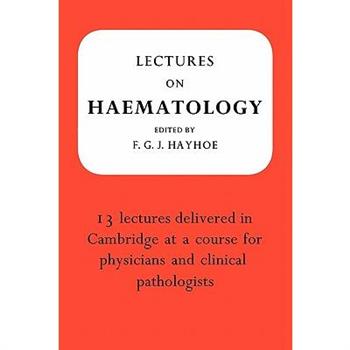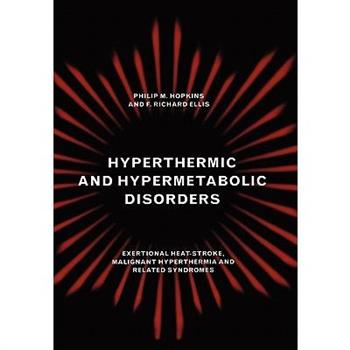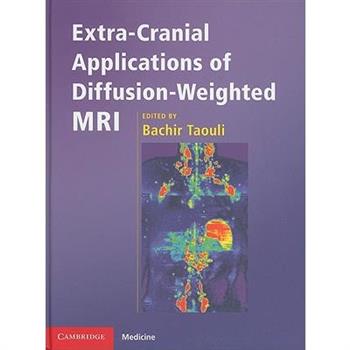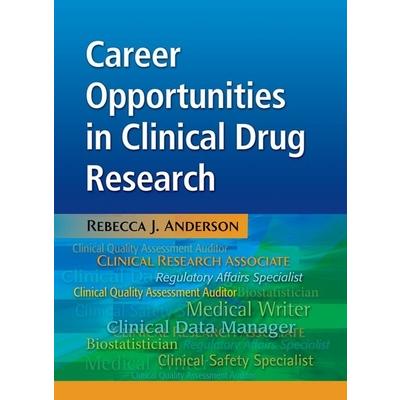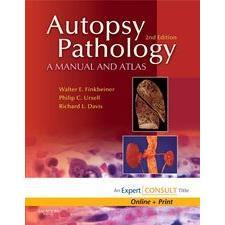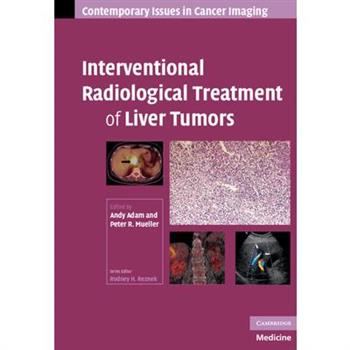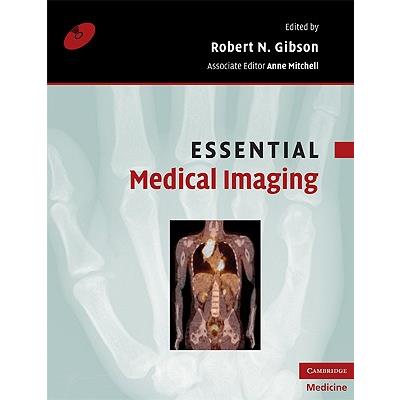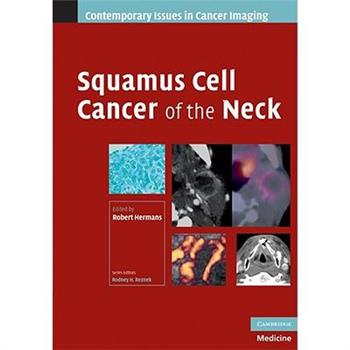Post-Mortem Methods
Originally published in 1915 as part of the Cambridge Public Health Series, this book provides a step-by-step guide to a post-mortem examination. Beattie also includes a chapter on how to examine thoroughly the corpses of people who have died of diseases such as leukaemia or sleeping sickness. An interesting appendix on the preparation and preservation of museum specimens is also supplied. This book will be of interest to anyone with an interest in the history of medicine and the historical performance of the autopsy.
The Practical Pocket Guide to History Taking and Clinical Examination
History taking and examination skills are vitally important in everyday practice. They are examined at all levels of the undergraduate curriculum and are constantly monitored at a postgraduate level. To become proficient in history taking, key questions should be asked to quickly understand the exact nature of the illness. This invaluable guide specifies the questions required for a focused history and details the key components of the ideal examination, resulting in the development of clinical skills that are timely, comprehensive, relevant and succinct. Clearly laid out and easy-to-read, The Practical Pocket Guide to History Taking and Clinical Examination is highly recommended for medical students and junior doctors wanting a practical, quick reference to aid confidence and develop excellent clinical consultation skills. It is also ideal as an aide-m矇moire for exam preparation.
People, Parasites, and Plowshares
Dickson D. Despommier's vivid, visceral account of the biology, behavior, and history of parasites follows the interplay between these fascinating life forms and human society over thousands of years. Despommier focuses on long-term host-parasite associations, which have evolved to avoid or even subvert the human immune system. Some parasites do great damage to their hosts, while others have signed a kind of "peace treaty" in exchange for their long lives within them. Many parasites also practice clever survival strategies that medical scientists hope to mimic as they search for treatments for Crohn's disease, food allergies, type 1 diabetes, organ transplantation, and other medical challenges.Despommier concentrates on particularly remarkable and often highly pathogenic organisms, describing their lifecycles and the mechanisms they use to avoid elimination. He details their attack and survival plans and the nature of the illnesses they cause in general terms, enabling readers of all backgrounds to steal a glimpse into the secret work of such effective invaders. He also points to the cultural contexts in which these parasites thrive and reviews the current treatments available to defeat them. Encouraging scientists to continue to study these organisms even if their threat is largely contained, Despommier shows how closer dissection of the substances parasites produce to alter our response to them could help unravel some of our most complex medical conundrums.
Lectures on Haematology
Originally published in 1960, this volume contains the lectures delivered at a Cambridge Postgraduate Medical Course for consultants, senior registrars and medical research workers having haematology as one of their main laboratory or clinical interests. The course was held in December, 1959. The lectures are informative reviews of important topics in haematology, given by workers who themselves contributed to the advance of knowledge in their respective fields.
Nitric Oxide in Bone and Joint Disease
Nitric oxide research has emerged as one of the most important new areas in bone and joint diseases. This book is the first to bring together current knowledge on the actions of nitric oxide and its role in such common diseases as arthritis and osteoporosis. The volume introduces the basic biology and biochemistry of nitric oxide, the immune response, and bone biology. While doing so, it reviews in depth the facts we know today and the future promise of this exciting area of research. Throughout the book, the authors emphasize potential new treatments that exploit our understanding of the role of nitric oxide in bone and joint disease. This resource will give scientists and clinicians unique insight into this increasingly important area of research.
Diagnostic Pitfalls in Histopathology and Cytopathology Practice
In the light of increased awareness of the legal as well as clinical implications of misdiagnosis of pathological specimens, this book provides the trainee and practising histo- and cytopathologist with a comprehensive review of the potential pitfalls encountered in a number of key diagnostic areas (cervical screening, breast cancer screening, pigmented lesions of the skin, lymphoproliferative disease, disease of the gastrointestinal tract and disease of the genito-urinary system). Each chapter has been written by a recognised expert in the organ or organ system concerned and, with the aid of full colour histo- and cytopathological specimens throughout, outlines the most important diagnostic and differential diagnostic features and indicates not only where confident diagnosis can sometimes prove problematic, but also how best to avoid these potential pitfalls in the first instance.
Muscloskeletal Cytohistory
Each volume in this richly illustrated series, sponsored by the Papanicolaou Society of Cytopathology, provides an organ-based approach to the cytological and histological diagnosis of small tissue samples. Benign, pre-malignant and malignant entities are presented in a well-organized and standardized format, with high-resolution color photomicrographs, tables, tabulated specific morphologic criteria and appropriate ancillary testing algorithms. Example vignettes allow the reader to assimilate the diagnostic principles in a case-based format. This volume describes the cytologic, small core biopsy, immunohistochemical and molecular diagnostic features of musculoskeletal lesions. It provides the cytopathologist and histopathologist with a comprehensive survey of diagnostic approaches and diagnostic features for benign and malignant lesions. Each chapter contains a detailed summary of differential diagnostic features, supported by high-quality images and case studies. With over 500 printed photomicrographs and a CD-ROM offering all images in a downloadable format, this is an important resource for practising pathologists and residents in pathology.
The Happy Hypochondriac
How does a person stay upbeat in life when she constantly fears death or other health catastrophes? This humorous, absurd, yet relatable story offers a glimpse into the antics of a hypochondriac; from the rapturous to the downright ugly. She endures dance recitals gone wrong, first love amid the glow of mini golf, living the college dream with waffle batter in her hair, the gut-wrenching loss of her parents, forging lasting love while clinging to a mountain, and starting her own family with a rash so bad she was declared a medical marvel; but shows it's possible to function, succeed and even have fun despite the craziness. About the Author: Kat Spitzer writes the blog, "The Happy Hypochondriac" (www.happyhypochondriac.com). She also writes nonfiction for magazines. The Happy Hypochondriac is her first book. She graduated from Vanderbilt University and Vermont Law School. The word "hypochondriac" appears in all of her medical files. She lives in Maryland, surrounded by her very patient and understanding friends and family.
Overdiagnosed
A nationally recognized expert offers a searing expos矇 of Big Pharma and the American healthcare system's zeal for excessive medical testing. More screening doesn't lead to better health--but can turn healthy people into patients. Going against the conventional wisdom reinforced by the medical establishment and Big Pharma that more screening is the best preventative medicine, Dr. Gilbert Welch builds a compelling counterargument that what we need are fewer, not more, diagnoses. Documenting the excesses of American medical practice that labels far too many of us as sick, Welch examines the social, ethical, and economic ramifications of a health-care system that unnecessarily diagnoses and treats patients, most of whom will not benefit from treatment, might be harmed by it, and would arguably be better off without screening. Drawing on 25 years of medical practice and research on the effects of medical testing, Welch explains in a straightforward, jargon-free style how the cutoffs for treating a person with "abnormal" test results have been drastically lowered just when technological advances have allowed us to see more and more "abnormalities," many of which will pose fewer health complications than the procedures that ostensibly cure them. Citing studies that show that 10% of 2,000 healthy people were found to have had silent strokes, and that well over half of men over age sixty have traces of prostate cancer but no impairment, Welch reveals overdiagnosis to be rampant for numerous conditions and diseases, including diabetes, high cholesterol, osteoporosis, gallstones, abdominal aortic aneuryisms, blood clots, as well as skin, prostate, breast, and lung cancers. With genetic and prenatal screening now common, patients are being diagnosed not with disease but with "pre-disease" or for being at "high risk" of developing disease. Revealing the economic and medical forces that contribute to overdiagnosis, Welch makes a reasoned call for change that would save us from countless unneeded surgeries, excessive worry, and exorbitant costs, all while maintaining a balanced view of both the potential benefits and harms of diagnosis. Drawing on data, clinical studies, and anecdotes from his own practice, Welch builds a solid, accessible case against the belief that more screening always improves health care.
Hyperthermic and Hypermetabolic Disorders
This authoritative and comprehensive new publication looks in depth at a range of medical syndromes characterized by serious and unpredicted internal overheating of the body. As a result of heat stress, exceptional physical exertion, or in response to certain drugs, these episodes may arise suddenly and unexpectedly, with life-threatening consequences. This text's contributions focus on the full range of these syndromes, their metabolic and physiological bases, the important predisposing factors that determine those at risk, and the medical management of these conditions. The volume incorporates a wealth of information from the Leeds Malignant Hyperthermia Investigation Unit--the world's leading center of research and investigation in this area.
Extra-Cranial Applications of Diffusion-Weighted MRI
Continuous improvement in MRI technology in recent years has led to the application of diffusion-weighted MR imaging in organ systems outside the brain. Extra-Cranial Applications of Diffusion-Weighted MRI provides an extensive review of current and future applications of this imaging modality by world-renowned experts. Organized by organ system, each chapter is highly illustrated, offering a balance of protocols, illustrations and principles of image interpretation. An initial chapter provides an overview of relevant physics and other technical details, followed by detailed chapters on all major body systems including liver, kidney, prostate, breast and spine. A final chapter discusses assessment of therapy response. Written and edited by leading DW-MRI experts worldwide, Extra-Cranial Applications of Diffusion-Weighted MRI is an invaluable resource for radiology trainees, practising radiologists and for researchers in a wide variety of disciplines.
Career Opportunities in Clinical Drug Research
This book is an easy-to-follow handbook that introduces readers to entry-level clinical job opportunities and explains how to qualify for them, with particular emphasis on how to gain "clinical experience" that a hiring manager will accept.
Chasing Medical Miracles
Clinical trials have become a $24 billion industry that is reshaping every aspect of health care development and delivery in the United States and around the world. Chasing Medical Miracles is the first book to give readers a behind-the-scenes look at the complicated world of clinical trials and how a multibillion-dollar industry of private companies conducting clinical trials with little oversight has quietly become a major part of the American medical establishment. O'Meara reveals what every health-conscious person needs to know about how drugs, devices, and procedures are tested and approved.
Travels With Shubh
For over a decade, MetaWorks was a pioneer in both the science and business of Evidence-based Medicine. Travels with Shubh is a co-founder's memoir of the MetaWorks journey, as told through a series of vignettes anchored in the personal mantras of one unusual change agent who was integral to its success. The MetaWorks story vividly illustrates the highs and lows of a healthcare start-up, while at the same time providing a unique glimpse into the ongoing evolution of healthcare analytics and the business of medicine.
The Psychology of Insanity
This book is widely known for its lucid account of the modern theory that sanity and insanity are not to be divided in a clear-cut way, but rather shade gradually into one another. Since this book deals mainly with the fundamental general principles of abnormal psychology, and these were already clearly formulated at the time it was first written in 1912, a considerable part of the text needs no amendment. The author has revised the introductory chapter on the historical development of the subject, and his preface explains the scope and purpose of those textual changes which he feels to be necessary. The contents include chapters on the history and psychological conception of mental disorder, the phenomena of mental disorder, dissociation, complexes, conflict, repression, manifestation of repressed complexes, projection, the irrationality of the insane, phantasy, and the significance of conflict.
Psychotherapie Und Beratung Bei Menschen Mit Asperger-syndrom
In Vitro Methods in Toxicology
First published in 1987, this book describes tissue (cell and organ) culture techniques which could be used at a critical predevelopment stage to screen for drug-inducing toxicity or to analyse the molecular mechanisms of toxicity at a later stage in parallel with investigative studies. This type of research has important ethical, financial and scientific implications. In particular, less animals and compound are required in in vitro research and more detailed information at the cellular and subcellular levels can be obtained. The volume brings together the once disparate knowledge of cultural techniques and thus provides an important reference work for industrial and academic toxicologists. It could also form a framework for discussion of potential improvements and modification of toxicity testing.
Interventional Radiological Treatment of Liver Tumors
Interventional radiological techniques are becoming increasingly important in the treatment of both primary and secondary malignant liver tumours. Surgery for liver tumours can be effective but carries considerable risks and new techniques have recently been developed. This volume provides an account of interventional radiological methods by some of the greatest experts in the field. It includes chapters on cryotherapy, chemoembolization and radiofrequency ablation and an extensive chapter on imaging techniques. The scientific background of these techniques, the pathology of the diseases involved and an analysis of more traditional surgical methods are also described. This text brings together the latest advances in this fast-developing field.
Essential Medical Imaging
Essential Medical Imaging is a concise introductory text covering the clinical role of radiology in adult and paediatric medicine and surgery. The emphasis is on placing radiology in a clinical context and guiding the reader to apply imaging modalities to specific clinical problems. An introductory section outlines the principles of image generation and image interpretation, as well as risks, benefits and costs. Subsequent sections review key clinical considerations and illustrate important radiology findings for each common clinical condition and patient population. A library of annotated normal radiological images and a terminology and abbreviations section are also included. A companion CD containing more detailed text and an extensive collection of clinical images accompanies the text. Highly visual and practical, Essential Medical Imaging is an invaluable resource for medical students, trainees in radiology, medicine & surgery, and for radiographers and all allied health professionals.
Squamous Cell Cancer of the Neck
Part of the bestselling Contemporary Issues in Cancer Imaging series, this book provides crucial imaging information on disease extent in head and neck malignancies. A thorough knowledge of the loco-regional anatomy of this complex area and a proper understanding of the natural disease spread pattern are prerequisites in the interpretation of these imaging studies. After an introductory chapter on epidemiology and clinical signs, this book reviews the pertinent imaging findings for each of the major anatomical subsites. Emphasis is on CT and MRI, but PET and ultrasound are also discussed where appropriate. Reviews on modern surgical and radiotherapeutic techniques are included, helping the reader to understand post-treatment tissue changes and how to differentiate these from tumor recurrence or treatment complications.
Hematopathology
This comprehensive, full color hematopathology reference book emphasizes immunophenotpic features, cytogenetic studies, and diagnostic molecular aspects. Hematopathology begins with introductions to morphologic evaluation of the hematopoietic tissues and principles of immunophenotyping, cytogenetics and molecular studies followed by chapters dedicated to different types of hematologic disorders. Each chapter starts with a basic overview of hematopathlogy followed by a comprehensive review of immunophenotypic, cytogenetic and molecular findings. The text is balanced with large numbers of full color images, graphs, charts, and tables to assist the reader in understanding these highly technical issues. * Emphasizes the immunophenotypic features, cytogenetic studies, and diagnostic molecular aspects of hematology* Features hundreds of images, charts and tables for the identification of hematologic disorders not only based on histopathologic features, but also with the use of advanced accessory techniques.





















